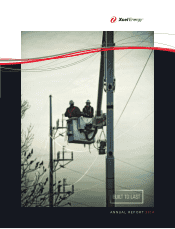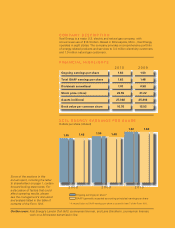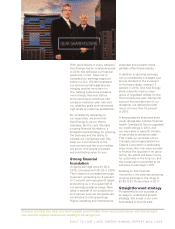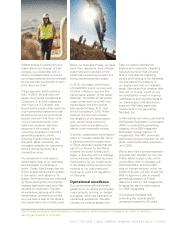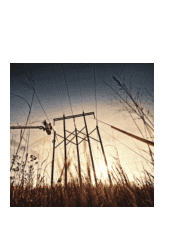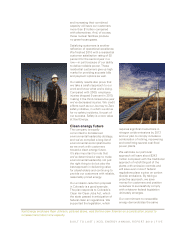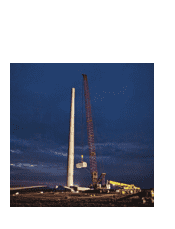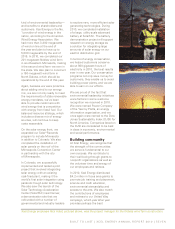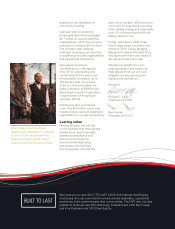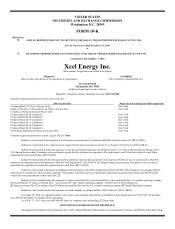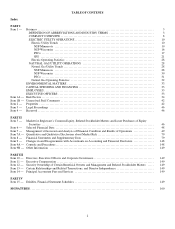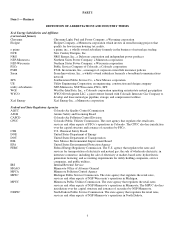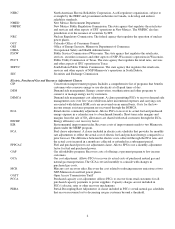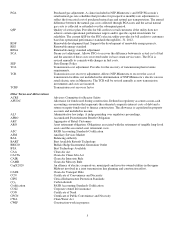Xcel Energy 2010 Annual Report Download - page 5
Download and view the complete annual report
Please find page 5 of the 2010 Xcel Energy annual report below. You can navigate through the pages in the report by either clicking on the pages listed below, or by using the keyword search tool below to find specific information within the annual report.
reliable energy to customers at a
reasonable price. As part of that
process, we collaborate with a
variety of stakeholders to ensure
our investments are environmentally
sound and that we are able to earn
a fair return on them.
It’s an approach that’s working
well. In 2010, for example, we
began commercial operations at
Comanche 3, an 800-megawatt,
coal-fired unit in Colorado. We
launched the project after reaching
a comprehensive settlement with
several prominent environmental
groups, and we fit all three units
of the Comanche facility with
advanced emission-reduction
equipment. As a result, we
more than doubled Comanche’s
generating capacity, while
lowering overall emissions from
the plant. Most important, we
increased reliability for customers
and are delivering power at a
competitive price.
Our investment in the electric
transmission side of our business
also illustrates our strategy in
action. Today, Xcel Energy has the
fourth-largest transmission system
in the nation, with assets in 10
states. We’re growing that business
by first ensuring that our projects
address legitimate need and offer
benefits to customers. We also
do extensive planning with other
transmission providers and make
sure we have a seat at the table in
any transmission forum that could
affect our business. Finally, we seek
input from regulators, local officials,
customers and members of the
public before starting a project and
during the development phase.
In 2010, we began construction
of CapX2020, a joint venture with
10 other utilities to improve the
transmission system of the Upper
Midwest. The effort’s first project
under construction is a 240-mile
transmission line from central
Minnesota to Fargo, N.D., that
will be complete in 2015. When
finished, the line will increase
the reliability of the transmission
grid, support area economic
development and enable us to
deliver more renewable energy.
A similar, collaborative transmission
effort in Colorado called SB 100 is
in development and construction.
In Texas, several projects that are
part of our Power for the Plains
initiative are under construction.
Again, in keeping with our strategy,
we’ve received favorable recovery
mechanisms for our investments
in the states where we serve the
majority of our customers and
continue to work with regulators
on that goal.
Operational excellence
Our construction efforts benefit
greatly from our ability to complete
major projects on time, on budget
and safely, which are hallmarks of
operational excellence. We also
operate our existing assets well.
Take our electric distribution
system as an example. Despite a
turbulent summer that included
fires in Colorado and lightning
strikes and flooding in the Midwest,
we maintained the integrity of
our system and met our reliability
goals. Storms and hot weather take
their toll, of course, which is why
we consistently invest in ongoing
maintenance and improvements to
our transmission and distribution
systems. We make significant
investments in our generating
facilities, too.
In Minnesota, we have a plan before
the Nuclear Regulatory Commission
(NRC) to expand the generating
capacity of our 600-megawatt
Monticello nuclear plant by 71
megawatts. The NRC previously
approved a license extension for the
plant, which authorized operations
until 2030.
We’ve also filed a license extension
proposal with the NRC for our two
Prairie Island nuclear units, which
would allow them to operate until
2033 and 2034. After the NRC
acts on license renewal, which we
expect this year, we plan to ask the
NRC to approve a plan to expand
generating capacity at Prairie
Island by a total of 164 megawatts,
bringing the plant’s total capacity
to 1,264 megawatts.
Our analysis indicates that
extending the nuclear plants’
operating licenses for 20 years
BUILT TO LAST | XCEL ENERGY ANNUAL REPORT 2010 | THREE
Xcel Energy employee Sarah Robinson, pictured above, was the project manager of an effort to reinforce
natural gas pipeline in Colorado.

